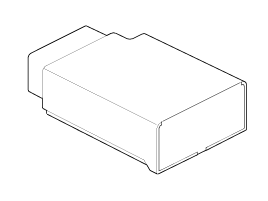 Kia Sportage: TPMS Receiver: Description and Operation
Kia Sportage: TPMS Receiver: Description and Operation
Third generation SL (2010ŌĆō2016) / Kia Sportage SL Service & Repair Manual / Suspension System / Tire Pressure Monitoring System / TPMS Receiver: Description and Operation
| Description |

| 1. |
Mode
|
| 2. |
Overview
|
| Operation |
| 1. |
General Function
|
| 2. |
General Conditions to Learn New Sensors:
|
| 3. |
General Conditions to Un-Learn a sensor that is removed:
|
 TPMS Sensor: Repair procedures
TPMS Sensor: Repair procedures
Removal
Tire Removal
1.
Deflate tire & remove balance weights.
Sensor can be unscrewed before unseat the tire bead.
ŌĆó
Th ...
 TPMS Receiver: Schematic Diagrams
TPMS Receiver: Schematic Diagrams
Schematic Diagrams
TPMS Receiver Circuit Diagram
Harness Connector
PinDescription1Battery2CAN_High3GND4-5-6-7IGN8CAN_Low9-10-11-12-
...
Other Information:
Interior light
Do not use the interior lights for extended periods when the engine is not running.
It may cause battery discharge.
WARNING - Interior light
Do not use the interior lights when driving in the d ...
Starting the engine
WARNING- Proper footwear
Always wear appropriate shoes when operating your vehicle. Unsuitable shoes
(high heels, ski boots, sandals, etc.) may interfere with your ability to use the
brake an ...
Categories
- Home
- Kia Sportage QL (2015-2019) Owners Manual
- Kia Sportage QL (2015-2019) Service Manual
- Kia Sportage SL 2010-2016 Owners Manual
- Kia Sportage SL 2010-2016 Service Manual
Copyright ® www.kispmanual.com 2014-2026
